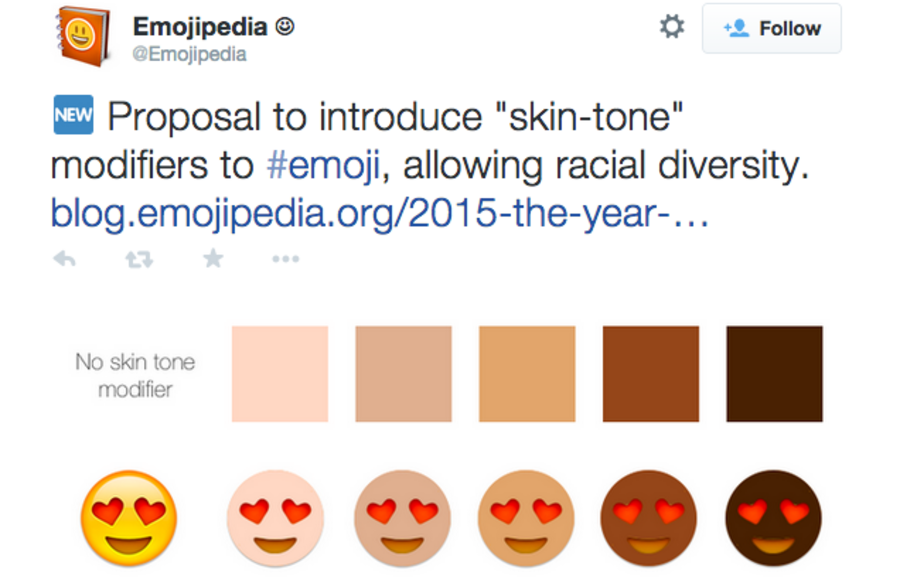Emoji skin tones floated: Should emoji be more racially diverse?
Loading...
A new skin tone modifier option could break from guidelines keeping emojis "as neutral as possible" and make the picture symbol more diverse in racial appearance.
The Unicode Consortium – non-profit organization that coordinates the development of the Unicode standard – released a technical report detailing a new method for handling the representation of multi-ethnic groups in emoji, MacRumors reported. The forthcoming Unicode 8.0 update proposes the modifier which would allow users to send human emoji in a range of skin tones.
"People all over the world want to have emoji that reflect more human diversity, especially for skin tone. The Unicode emoji characters for people and body parts are meant to be generic, yet following the precedents set by the original Japanese carrier images, they are often shown with a light skin tone instead of a more generic (inhuman) appearance, such as a yellow/orange color or a silhouette," says the report, which the writers emphasize is still in draft form. The symbol modifier characters are based on the tones of the Fitzpatrick scale, a recognized standard for dermatology, according to the report.
Emoji couples could also possibly feature different skin tones.
Previous guidelines have stated that emoji people be "as neutral as possible regarding race, ethnicity, and gender," MacRumors pointed out. Unless the emoji calls out specific gender or racial cues, a generic, inhuman appearance, "such as a yellow/orange color or a silhouette" should be used in its place.
At this point, hair and eye color options are not in the near future. Emojipedia, tweeting from a Unicode conference Tuesday, offered:
The planned release is for mid-2015, and the diversity proposals are still in draft stage. Further, no major platforms support Unicode 7.0 emoji yet.
But Apple has shown interest in diversifying its emoji lineup, as some consumers have demanded.
Earlier in the year, the company was called out for its emoticons lacking people of color, and an online petition asked Apple chief executive officer Tim Cook for "more diversity [on] the emoji keyboard" garnered more than 4,500 signatures.
Apple's then-vice president of worldwide corporate communications, Katie Cotton, responded to the criticisms:
"Our emoji characters are based on the Unicode standard, which is necessary for them to be displayed properly across many platforms. There needs to be more diversity in the emoji character set, and we have been working closely with the Unicode Consortium in an effort to update the standard."
Reactions to the report were mixed. While some online commenters dismissed the initiative as a "waste of time," others called the shades of emoji "a welcome addition, even if I'm 100% fine without them."
But some are questioning the purpose of bringing race into something meant purely to emote.
"Why not just stick to generic ones? Aren’t smileys meant to convey a certain emotion? When does the skin tone matter? I think this may have the opposite effect, namely abuse instead of actual use," one commenter noted. "I also think that it takes away a bit of the playful innocence of emojis and turns them into political statements."





